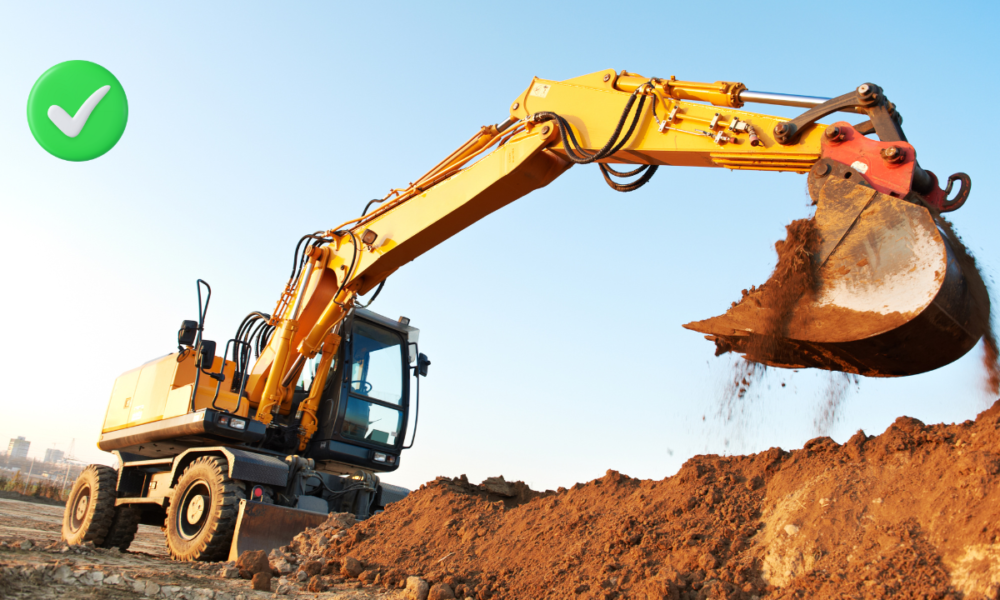How to Choose the Right Bucket Size for a Wheel Loader
Choosing the right bucket size is one of the most important decisions when working with a wheel loader. The wrong size can reduce efficiency, increase fuel consumption, and cause unnecessary wear on the machine. On the other hand, the right size can streamline your work, improve cycle times, and maximize return on investment.
To make the best choice, it’s essential to understand the role of bucket sizing in loader performance, how different job types affect your selection, and what key factors to consider when comparing options. This guide walks through all of that so you can make an informed choice based on your project and site needs.
What Is a Loader Bucket, and Why Does Size Matter?
The bucket is the primary attachment used to scoop, carry, and dump materials. It’s mounted to the front end of the machine and can handle a variety of materials like gravel, soil, sand, snow, or waste. Choosing the right size isn’t just about how much material it can hold—it’s about how well it works with the loader’s power, hydraulic system, and balance.
An oversized bucket may seem like it will save time, but it can slow down operations if the machine is constantly struggling to lift or maneuver it. A bucket that’s too small, on the other hand, will require more trips and waste time on the job.
Understand the Types of Materials You’re Moving
Before selecting a bucket size, the first thing to think about is what kind of material you’ll be working with. Heavier materials require smaller buckets to maintain machine stability and control. Lighter materials allow for larger bucket volumes without overloading the equipment.
Here’s a general breakdown:
- Heavy Materials: Dense items like crushed stone, wet sand, or clay should be moved with smaller buckets to prevent overloading and maintain safe operation.
- Light Materials: Things like mulch, snow, or dry topsoil can be handled with larger buckets, maximizing load volume per cycle.
- Mixed or Variable Materials: In cases where the material may vary, a mid-range bucket is usually a safer choice unless attachments or swap-outs are feasible.
Understanding material density and weight is key to safe and efficient loader operation.
Match Bucket Size to Loader Capacity
Every loader has a recommended bucket size range based on its lifting capacity and hydraulic power. Trying to attach a bucket that exceeds those guidelines can lead to equipment damage, safety hazards, or reduced lifespan.
Always refer to the manufacturer’s specs before upgrading or changing bucket size. This will include:
- Maximum material weight per lift
- Tipping load limits
- Hydraulic breakout force
- Arm reach and dump height
Using a bucket that’s too large can compromise stability, while one that’s too small leaves the machine underutilized.
Consider the Application and Worksite Conditions
The type of work you’re doing plays a major role in selecting the best bucket size. Different jobs place different demands on the loader, and certain site conditions can also limit what size will work efficiently.
For Construction and Demolition
If you’re loading dense construction debris into trucks, a mid-sized general-purpose bucket will likely give you the best balance between efficiency and control. These buckets are often reinforced to handle more abrasive materials without wearing down quickly.
For Landscaping or Agriculture
When moving mulch, compost, or similar materials, larger-capacity buckets work well and help cover more ground in less time. Sites with soft terrain may benefit from wider buckets to distribute weight and reduce ruts.
For Snow Removal or Waste Handling
For very light materials, high-capacity buckets with spill guards can be used. These buckets are designed to handle large volumes without worrying about weight limits. Just be sure that the site layout allows for enough space to maneuver a larger attachment.
Know Your Bucket Types
Buckets come in more than just one shape or size. Picking the right type of bucket for the job is just as important as size.
- General-Purpose Buckets: Suitable for most materials, these are the go-to option for standard construction and loading jobs.
- Light Material Buckets: Larger in size and optimized for high-volume, low-density loads.
- Rock Buckets: Smaller and stronger, built to handle abrasive, heavy material.
- High-Dump Buckets: Used when extra dumping height is needed, such as loading into tall-sided trucks.
Your chosen bucket should match both your application and the characteristics of the site.
Don’t Overlook Dump Height and Clearance
When choosing a bucket, consider how high it can lift and how far it can dump. This becomes important when loading materials into trucks, silos, or hoppers. If the bucket doesn’t clear the side, it may cause spillover or slow down operations.
Check the maximum dump height of the loader with your selected bucket and compare it to the height of the receiving container. You’ll also want to factor in the rollback and dump angles, especially if you’re operating in tight spaces or uneven terrain.
The Role of Quick Couplers
Quick couplers allow operators to switch between different buckets or attachments in a matter of minutes without leaving the cab. If you frequently handle multiple types of materials or switch between digging and lifting tasks, using a coupler system provides flexibility without sacrificing productivity.
This setup allows contractors to keep both large and small buckets on hand, choosing the best fit for each specific part of the job.
Maintenance and Longevity Considerations
Larger buckets experience more wear and tear simply due to their size and the forces they encounter. If you’re investing in a larger bucket, make sure it’s reinforced at key stress points, such as the cutting edge and side plates. These wear zones take a beating in everyday use.
It’s also important to regularly inspect and maintain your bucket. Look for cracks, broken welds, or excessive wear that could affect performance or safety. Using the wrong size or type of bucket often results in premature damage, costing more in repairs and downtime.
Renting or Buying? Consider Project Duration
If you’re only taking on a temporary job or seasonal work, renting might be the more practical option. Rental providers typically offer a selection of bucket sizes and attachments to match your machine and needs.
For long-term use, investing in a high-quality bucket that matches your loader’s specs is worthwhile. Just make sure to choose something versatile enough to handle the majority of your jobs.
Final Thoughts
Selecting the right bucket size can dramatically improve the performance of your loader and reduce strain on both the operator and the machine. It’s not just about moving more material—it’s about doing it safely, efficiently, and within the limits of your equipment.
Always match the bucket to your specific application, loader specs, and worksite conditions. Understand the material you’re handling, and choose attachments that help you get more done with each cycle. Whether you’re handling snow, gravel, topsoil, or demolition debris, the right bucket makes all the difference.
From basic general-purpose options to job-specific specialty buckets, your choices matter. And if you’re working with a wheel loader regularly, choosing the correct bucket the first time can save both time and money in the long run.







